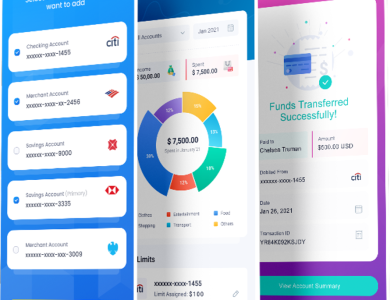The Russian market for drug sales has garnered significant attention in recent years due to its unique dynamics, widespread corruption, and the complex socio-economic factors influencing drug trade. Understanding the appeal of this market requires an examination of several interrelated aspects, including the socio-political environment, economic conditions, cultural attitudes toward drug use, and the strategies employed by drug traffickers. This article delves into these elements to provide a comprehensive overview of why the Russian market remains a focal point for illegal drug sales.
Historical Context
The roots of the Russian drug market can be traced back to the collapse of the Soviet Union in the early 1990s. The disintegration of the centralized economy and the subsequent rise of a free-market economy created a fertile ground for the emergence of drug trafficking networks. The chaos and instability that followed the dissolution of the USSR allowed organized crime groups to flourish, facilitating the importation and distribution of narcotics. The early 2000s saw a surge in heroin trafficking from Afghanistan, leading to an increase in addiction rates and drug-related crimes across the country.
Economic Factors
One of the primary appeals of the Russian market for drug sales lies in the country’s economic conditions. High unemployment rates, especially among the youth, combined with stagnant wages have created an environment where illegal activities can thrive. For many individuals, drug trafficking offers a lucrative alternative to traditional employment, often with less risk than engaging in more visible forms of crime. The potential for high profits attracts many to the trade, despite the significant risks involved.
Furthermore, the economic disparity between urban and rural areas exacerbates the problem. While major cities like Moscow and St. Petersburg may have more resources and job opportunities, rural regions often struggle with poverty and lack of infrastructure. In these areas, drug sales can become one of the few viable means of economic survival. This economic incentive is compounded by a lack of effective law enforcement in these regions, making it easier for traffickers to operate.
Socio-Political Environment
The socio-political climate in Russia further contributes to the drug market’s appeal. Corruption within law enforcement and government institutions creates a landscape where drug trafficking can flourish. Reports of police officers turning a blind eye to drug sales in exchange for bribes are common, leading to a culture of impunity for traffickers. This corruption undermines efforts to combat drug-related crime and creates a perception that engaging in drug sales carries minimal consequences.
Additionally, the Russian government’s approach to drug policy has often been criticized for its harshness and lack of effectiveness. The focus has largely been on punitive measures rather than addressing the root causes of drug addiction and trafficking. This repressive environment does little to deter drug sales; instead, it can push drug markets underground, making them more lucrative and harder to police. The result is a vicious cycle where ineffective policy leads to increased trafficking and addiction rates.
Cultural Attitudes Toward Drug Use
Cultural perceptions of drug use in Russia also play a crucial role in the drug market’s appeal. While drug addiction is often stigmatized, the widespread availability of narcotics has normalized their use in certain social circles. The use of substances such as synthetic drugs and opioids has become increasingly prevalent, particularly among young people. This trend is fueled by social factors, including peer pressure, the search for escapism from harsh realities, and the influence of popular culture, where drug use is often glamorized.
Moreover, the Russian public’s understanding of addiction is still evolving. There is often a lack of awareness about the complexities of drug dependence and the need for rehabilitation. This lack of education can lead to fatalistic attitudes towards addiction, with many believing that drug users are beyond help. As a result, the stigma associated with drug use may not deter individuals from entering the market as sellers, especially when they view drug sales as a means of survival.
Drug Trafficking Networks
The structure of drug trafficking networks in Russia is complex and involves multiple layers of operation. Many traffickers are organized into networks that span both local and international markets, often collaborating with foreign suppliers. This globalization of the drug trade has allowed Russian traffickers to access a wider range of substances, from traditional narcotics like heroin and cocaine to synthetic drugs like methamphetamine and ecstasy.
These networks utilize advanced logistics and distribution methods to evade law enforcement. The use of technology, such as encrypted communication and online marketplaces, has revolutionized the way drugs are sold in Russia. Dark web platforms allow traffickers to connect with buyers while minimizing the risk of detection. This shift towards online sales has made drugs more accessible, particularly to younger demographics who are comfortable navigating digital platforms.
Government Response
The Russian government has taken a hardline stance against drug trafficking, employing a range of strategies to combat the issue. This includes increased law enforcement efforts, harsh penalties for drug-related offenses, and international cooperation to dismantle trafficking networks. However, these measures have met with limited success.
The punitive approach has not addressed the underlying issues driving drug use and trafficking. Instead, it has often led to overcrowded prisons and further marginalization of drug users, many of whom require treatment rather than punishment. Critics argue that a more holistic approach that includes education, harm reduction, and rehabilitation is necessary to effectively combat the drug crisis in Russia.
The Role of Technology
As the drug market continues to evolve, technology plays a crucial role in its dynamics. The rise of the dark web has transformed drug sales, allowing traffickers to operate with greater anonymity. These platforms facilitate the buying and selling of drugs without the need for face-to-face transactions, reducing the risk of arrest. Cryptocurrency has also become a favored method of payment among traffickers, further complicating efforts to trace financial transactions.
Social media platforms have also been utilized to promote drug sales and reach potential customers. Dealers often use coded language and images to market their products while avoiding detection. This digital evolution poses significant challenges for law enforcement agencies, which must adapt to the changing landscape of drug trafficking.
Conclusion
The appeal of the russianmarket.to for drug sales is rooted in a combination of economic necessity, socio-political factors, cultural attitudes, and the evolving landscape of drug trafficking. Despite the government’s efforts to combat the drug trade, the persistent issues of corruption, inadequate treatment for addiction, and the complexities of global trafficking networks continue to challenge effective policy responses.
Addressing the drug crisis in Russia requires a multifaceted approach that considers the socio-economic realities faced by individuals involved in drug sales and use. By focusing on prevention, education, and rehabilitation rather than solely punitive measures, there may be a path forward to reduce the allure of the drug market and support those affected by addiction. The fight against drug trafficking in Russia is ongoing, and understanding the underlying factors that contribute to its appeal is crucial for developing effective strategies to combat it.




